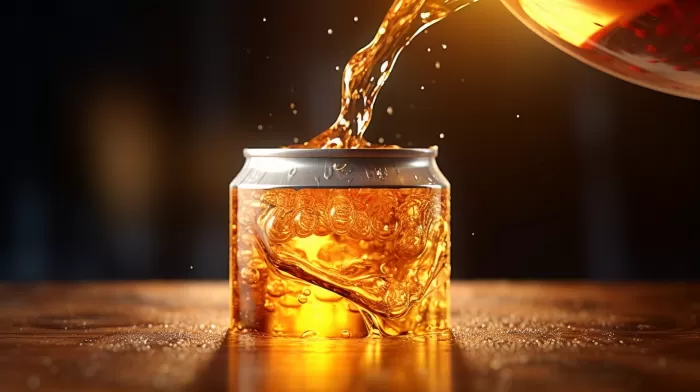High-fructose corn syrup (HFCS) is a toxic substance added to many manufactured and fast foods, with the food industry and the US Food and Drug Administration (FDA) claiming its safety. However, various studies have shown that fructose is harmful to the liver, heart, and reproductive system. Shockingly, US citizens are estimated to consume between 60 to 130 pounds of sugar each year, with most of that sugar being HFCS.
The Hidden Sugar in Beverages
The majority of sugar that is consumed comes from beverages. According to The Diabetes Council, each type of drink contains the following added sugar:
- Fancy Coffee (16 ounces): 12-44 grams
- Bottled Teas (20 ounces): 18-33 grams
- Soda (12 ounces): 35-37 grams
- Sports Drinks (20 ounces): 8-40 grams
- Energy Drinks (20 ounces): 38-62 grams
- Bottled Smoothies (15 ounces): 40-80 grams
To understand how much sugar these statistics represent, remember that 4.2 grams of sugar is equal to one teaspoon. Given the amount of added sugar in these drinks, it’s clear that the dangers of HFCS are substantially worse for our bodies than regular sugar. This is because HFCS and cane sugar are not biochemically identical, and our bodies do not process them in the same way.
Impacts on the Liver
Unlike glucose, which our bodies naturally produce, fructose goes directly to the liver, triggering fat production (lipogenesis). This has resulted in a significant increase in non-alcoholic fatty liver disease (NAFLD), which can lead to fatal cirrhosis. According to the American Liver Foundation, nearly 100 million Americans have NAFLD. Additionally, HFCS leads to metabolic disturbances that can cause appetite, weight gain, diabetes, heart disease, cancer, dementia, and other conditions to increase.
Why Our Bodies Crave Sugar
Fructose is much sweeter than normal sugar, and whenever we consume it, we are training our bodies to crave more. Furthermore, fructose doesn’t trigger the typical satisfaction hormones leptin and insulin, which means there’s no signal to tell you that you’ve consumed enough.
HFCS: A Hidden Danger in Our Food
It’s very difficult to eliminate HFCS from your diet entirely because it’s added to a variety of foods, such as soda, candy, salad dressing, bread, and boxed or frozen meals. Children exposed to large quantities of this sugar experience changes at the cellular level. During a 10-day trial, a group of 40 obese children were given meals with the same energy and macronutrient content as their regular diet but with HFCS replaced by vegetables, bread, or pasta. The result was a 53% drop in the conversion of sugar to fat and a 20% drop in total liver fat.
Fructose in Fruit
While HFCS is a harmful and concentrated source of fructose, the fructose found in fruit is not dangerous. Consuming whole fruits a couple of times a day is not harmful to your health. However, the fortified concentrated fructose in HFCS is a significant concern because of the negative effects it has on the liver.
In order to maintain a healthy liver, it’s crucial to eliminate HFCS from your diet and limit your sugar intake. This can be done by reading food labels and being mindful of your consumption of processed food and sugary drinks.



